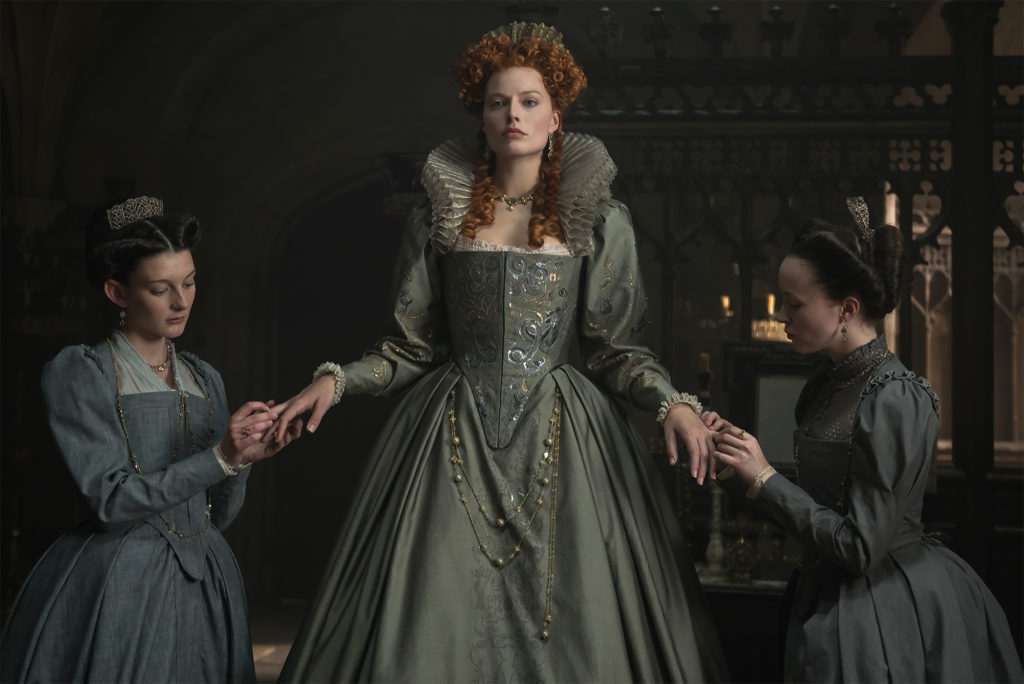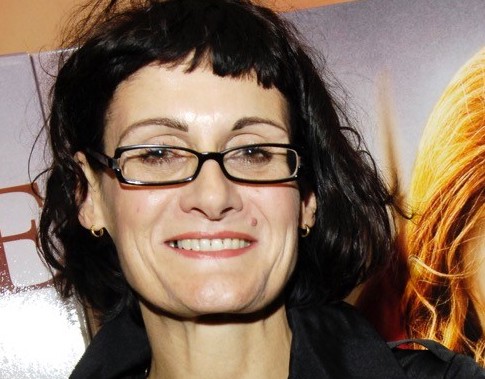For Alexandra Byrne, designing the clothes for “Mary Queen of Scots” came somewhat naturally. After all, she created the costumes for “Elizabeth: The Golden Age” and won an Oscar for her work. The Elizabethan period has become something of an area of expertise for Byrne, and it ultimately helped her dress two of the most famous Queens in English and Scottish history, Saoirse Ronan’s Mary Stuart and Margot Robbie’s Queen Elizabeth I.
Byrne’s career is long and extensive. She designed the costumes for Kenneth Branagh’s “Hamlet,” for which she nabbed her first Oscar nomination. She also received nods for costuming “Elizabeth” and “Finding Neverland.” Her other credits include “The Phantom of the Opera” and several Marvel movies, such as “Thor,” “The Avengers,” and “Doctor Strange.”
We talked to Byrne about her creative costume choices, why she chose to use denim in “Mary Queen of Scots,” and what it’s like to dress two very different lead characters in a period piece.
“Mary Queen of Scots” is playing in limited release until December 21, after which time it will roll out nationwide.
W&H: What is it like being a female costume designer in film today?
AB: I would say invigorating because a lot of questions are being asked and things are constantly being reappraised. Having worked on this film with a crew that was predominantly men, I feel like I have an even stronger voice.
W&H: What was it like to work on another period piece, specifically one with so many gender politics at play?
AB: Once you start working on a project, it’s really about the script and the story. You go into this tunnel of delivering the story and how you can help tell it. You are so on the task that it doesn’t matter whether it’s a superhero film or period film or contemporary film, it’s the world you’re working in.
W&H: You’ve had a lot of experience with this era, i.e. the 16th century, and Elizabethan dress, with “Elizabeth: The Golden Age,” for example. How did that experience both prepare you and give you insight on the costumes for “Mary Queen of Scots”?
AB: That made this experience rather unique. Normally when you read a script, you are reading it to work out the period and how much research you have to do. Your head is spinning.
I had the advantage of having a fairly strong baseline knowledge of the period, both with the historical research and in practical costume terms such as what it would take to make these dresses and how much stock would be available. I’d never had that existing knowledge base before. It meant that, as I was reading the script for “Mary Queen of Scots,” I had a very strong instinctive response to how I felt I wanted to dress the characters in the story.
W&H: How did you differentiate between the two films?
AB: The stories are so different. [“Mary Queen of Scots”] was really about two incredible women on the throne at a time where John Knox [a Scottish minister] was preaching that the world was going to end. Women were operating in a very predatory male world.
W&H: What was your research process like?
AB: Research is really very important to me. I’m consciously making decisions that will help tell the story. That process for this period was to read for visual reference. From that, I went on to distill hundreds of images from the Internet, books, and museums which had to do with a certain character, story point, or emotion from the film. These could be very eclectic, not all to do with the Elizabethan period. Distilling these images was the essence, the coding, and the reference of where I began to find the visual world for their costumes.
Then I discussed these boards with the director, hair and make-up designer, and production team. What’s great was that my boards were not definitive costume drawings. It was a collage of ideas, and everybody saw something different, making it a very dynamic, creative discussion. I also have a fantastic team in London and the costumes developed in the workroom.
W&H: How important were your fabric choices in this particular film?
AB: Basically, the big decision in this film was that I wanted to use denim. That decision came from very practical and artistic decision-making. The practical was marrying the costumes and knowing the fabric was available. No one had really “remade” this period since “Elizabeth: The Golden Age.” In addition, filming in Scotland in the rain and mud near to the sea added to the practicality of time and budget. I wanted visually to limit the materials I was using and to manipulate them to tell the story.
I also wanted the men to be sexy so I thought about reinterpreting their clothing to make them feel really strong. I wanted a fabric that would improve with age and wear. Normally when you take jeans off, they don’t lie flat on the floor, they take on the shape of your body, so that was the starting point.
W&H: How did you bridge the two time periods?
AB: I soon realized that I needed to bring a bit of modern design into the Elizabethan Age, and I began to play with the balance of those two themes to achieve the kind of accessibility that denim has. It was very much about balance.
The breakthrough moment was the first fitting with Saoirse, which normally we would do in calico but I did in denim to see what I had taken on. We made the Elizabethan shape that I wanted with the corset and under sleeves and put a modern shirt on at the end. It worked and I realized I had gotten the look.
W&H: Can you talk about the relationship between the costumes and the women’s varying personalities?
AB: The two Queens had very different journeys to the throne. They also ruled in very different ways. I wanted to support that through their clothing.
Elizabeth was very bright and very well educated. She learned to be strategic from a young age because she was declared illegitimate. She was also sexually compromised by her step-uncle. As Queen, she led a very wealthy country and sat at the top of quite a sophisticated pyramid of power. Her advisors were very loyal to her, such as Sir William Cecil and Sir Francis Walsingham, and they were also astute politicians and spin doctors. Walsingham actually started the very sophisticated operation of spies. So, Elizabeth was well supported.
W&H: Can you please talk about Queen Elizabeth? She had a very distinct style.
AB: Elizabeth also understood the power of her image. I think she used it to replace the iconography of the Virgin Mary. I wanted her clothes to be about strategic dressing. She dressed outfit by outfit for the occasion, and I used color to delineate one outfit from another.
That is up until the point she contracts smallpox, which at that time was a life-threatening disease. She had already been undermined by Mary’s beauty and the illness was hugely disfiguring. Elizabeth suffered a massive loss of self-esteem at the time, but she was playing the political game with Mary. Thus, she went under the radar. I chose to take the color out of her clothes during that period and went monochrome. In the final scene of the film, she literally drags herself out to meet Mary in what was seemingly an imposed meeting.
W&H: Tell us about Queen Mary’s journey.
AB: Mary’s journey was very different. She was Queen of Scotland at six weeks old and was sent to France at age five for a Catholic education. She led a very sophisticated, privileged life until she was widowed at age 17, when Catherine de’ Medici, her very powerful mother-in-law, basically sent her packing.
So she arrived on the coast of Scotland, stripped of her title and lifestyle, which is the start of this film. Her approach as a ruler was very pragmatic, as was her journey as a Queen. She also led a poor country. Her court was constantly disputing over land and money, thus she led moment by moment. I tried to reflect that in Mary’s clothing. When she returns to Scotland, she’s in mourning. White was the color of mourning in France, so she wears pale denim in the film.








